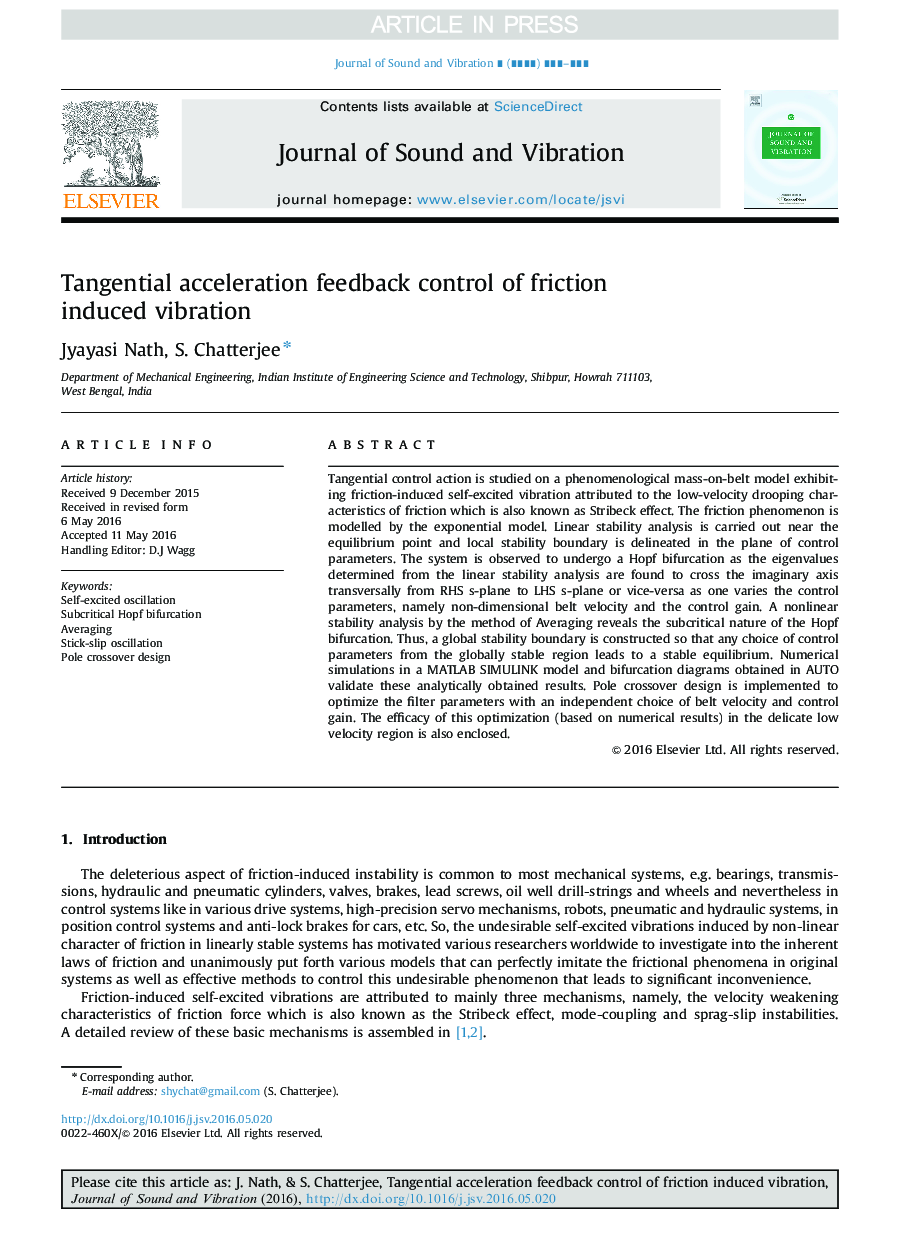| Article ID | Journal | Published Year | Pages | File Type |
|---|---|---|---|---|
| 6754385 | Journal of Sound and Vibration | 2016 | 16 Pages |
Abstract
Tangential control action is studied on a phenomenological mass-on-belt model exhibiting friction-induced self-excited vibration attributed to the low-velocity drooping characteristics of friction which is also known as Stribeck effect. The friction phenomenon is modelled by the exponential model. Linear stability analysis is carried out near the equilibrium point and local stability boundary is delineated in the plane of control parameters. The system is observed to undergo a Hopf bifurcation as the eigenvalues determined from the linear stability analysis are found to cross the imaginary axis transversally from RHS s-plane to LHS s-plane or vice-versa as one varies the control parameters, namely non-dimensional belt velocity and the control gain. A nonlinear stability analysis by the method of Averaging reveals the subcritical nature of the Hopf bifurcation. Thus, a global stability boundary is constructed so that any choice of control parameters from the globally stable region leads to a stable equilibrium. Numerical simulations in a MATLAB SIMULINK model and bifurcation diagrams obtained in AUTO validate these analytically obtained results. Pole crossover design is implemented to optimize the filter parameters with an independent choice of belt velocity and control gain. The efficacy of this optimization (based on numerical results) in the delicate low velocity region is also enclosed.
Related Topics
Physical Sciences and Engineering
Engineering
Civil and Structural Engineering
Authors
Jyayasi Nath, S. Chatterjee,
